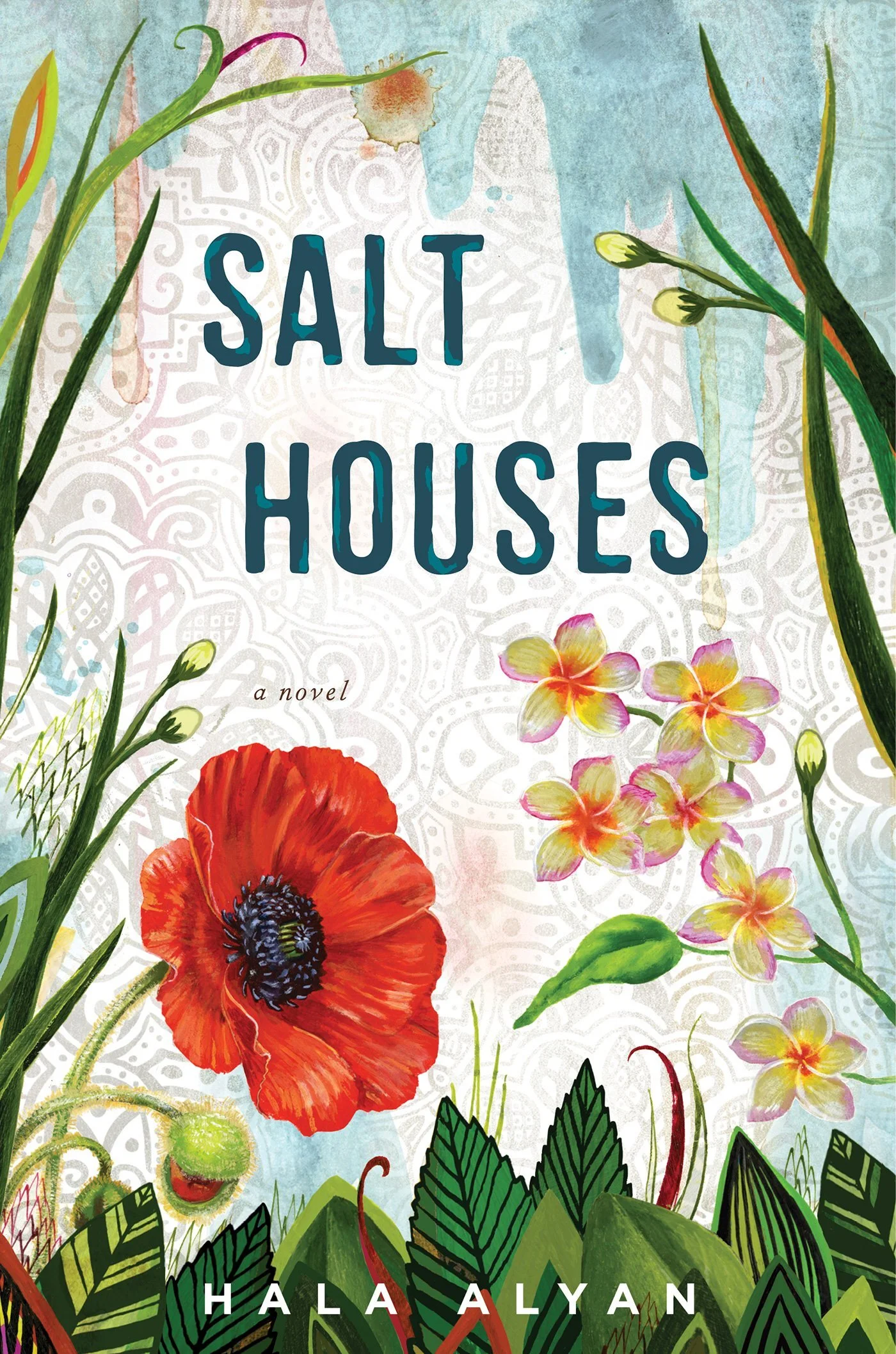SALT HOUSES: BOOK REVIEW
During my time at NYU’s Writers in New York program this summer, I had the amazing opportunity to learn craft and workshop under skilled writers while gaining knowledge about the ins and outs of publishing. However, one of the most rewarding aspects of the program was reading the work of one of my professors, Hala Alyan.
Alyan is a clinical psychologist and author of the novels The Arsonist’s City and Salt Houses, among various other award-winning collections of poetry. But to me, she is my creative writing professor, an enthusiastic supporter of young creatives, and a person who gives voice to writers in the industry. Alyan generously gave me the tools to take my first steps into New York’s writing culture.
But before taking her class, I needed to be prepared. Between spring and summer terms, I sat down with Alyan’s first novel Salt Houses. Intrigued by the plot that follows four generations of the Palestinian Yacoub family who were displaced by the Six Day War with Israel, I was immediately immersed in the book’s three hundred and ten pages. I thought the novel especially compelling given the recent oppression of Palestinians by Israelis.
The Yacoubs’ story begins in 1963 before the Six Day War, though context about their displacement is key to understanding the emotional weight of the novel. I provide this context regarding the conflict between Palestine and Israel in further paragraphs. The book begins with the perspective of Salma, mother of soon-to-be-married Alia. Over the course of the novel, the reader is taken on an intricate journey through the lives of Alia, her children, and great-grandchildren, in addition to characters such as her husband and brother. The reader follows the characters through Nablus, Kuwait City, Beirut, Paris, Boston, and more. While the story follows four generations of complex characters, Alyan’s writing allows one to forget that they are fictional. The generational plotline is important in tracking the changing ideals, styles, and desires of Palestinians through constant war and displacement. And through the form of historical fiction, Alyan globalizes the context of a conflict that has plagued Palestine for over a century.
During the period of World War I, which changed the geography of the Middle East, hundreds of thousands of Jewish immigrants migrated to Palestine through a movement called Zionism, or escaping persecution and establishing their own state. After the division of the Middle East formerly under Ottoman rule, Arabs and Jews struggled for power in western Palestine. Furthermore, World War II caused a surge of Jewish immigrants to the area. In the following years, Palestinians refused to accept defeat in the theft of their land by Zionists.
Palestine and Israel have been involved in several wars over the years, including one incited the same year that Israel claimed its independence. This prompted an Arab invasion of former Palestinian territory, resulting in the displacement of over seven hundred thousand Palestinian refugees. The Palestine Liberation Organization (PLO) formed with goals of securing the return of said refugees in addition to achieving independent political action and liberating Palestine. The Six Day War, the prompting conflict in Alyan’s novel, caused the displacement of over two hundred and fifty thousand more Palestinians.
In 1975, the United Nations passed a resolution defining Zionism as a form of racism. However, this was revoked in 1991. Furthermore, the Trump administration went so far as to claim that anti-Zionism is considered anti-Semitism. However, Palestinians who have suffered oppression under Israeli occupation do not see things this way. Over the years, despite several promises of peace, violence continued to stir between Palestine and Israel. Since the election of former president Donald Trump in 2016, the United States has provided thirty-eight billion dollars over ten years to the Israeli military.
These rising tensions between Israel and the still unrecognized state of Palestine came to a head in May of 2021 — Israeli police blockaded Jerusalem’s Damascus Gate, a popular gathering place for Arabs during Ramadan, during a time when Jewish settlers were attempting to evict the Arab neighborhood of Sheikh Jarrah. These acts sparked protests where both Arabs and Jews attacked each other; Israeli police violently raided the al-Aqsa Mosque, or the holiest site for Muslims in Jerusalem; massive airstrikes were sent by Israel in response to rocket attacks by the Palestinian organization Hamas. Overall, the death toll of Palestinians in the recent attacks by Israel has well surpassed that of Israelis, and tensions continue to thicken.
Now armed with the knowledge of Palestinians’ suffering at the hands of Israelis, I finished Salt Houses both mortified and moved. Following class one afternoon, I approached Alyan with the intent to inquire about her process when writing her novel. I was intrigued by everything about the novel, but mostly by her ability to weave such complicated storylines through even more complex characters. I knew, of course, that Alyan’s experience as a Palestinian woman who lived in the Middle East was part of the book’s realistic appeal. However, sitting down with her, she confided that the most important tool in writing Salt Houses was getting to know the characters as if they were real people. In understanding her characters like she would a friend or sibling, Alyan was able to turn the series of short stories that Salt Houses originally was into the beautiful, full-length novel it is today.


